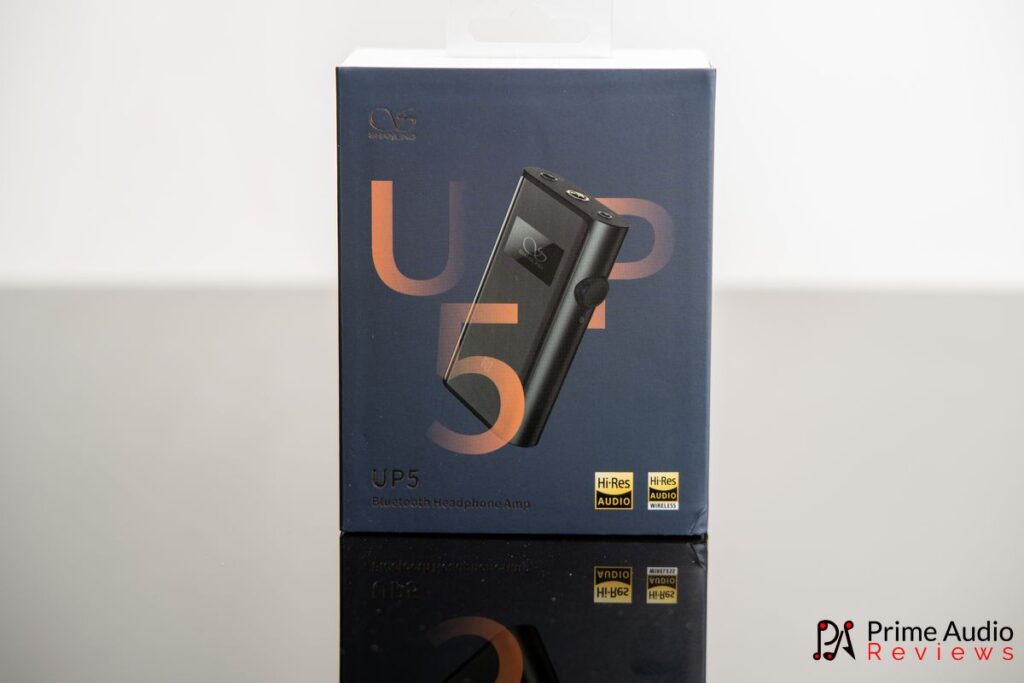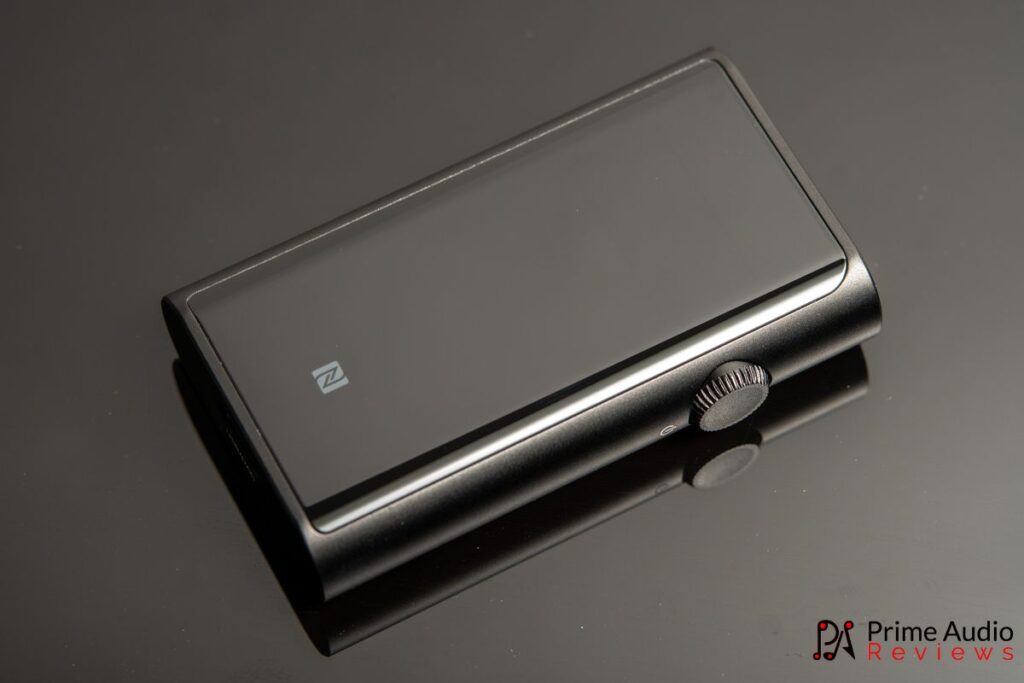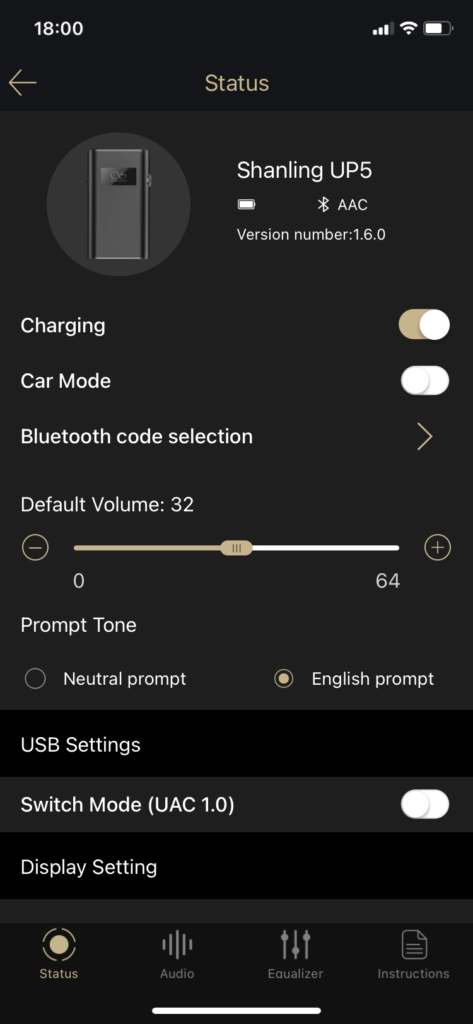The Shanling UP5 is a portable Bluetooth amplifier with dual ESS ES9219C DAC chips. It has Bluetooth 5.0, an OLED screen, wide audio codec support plus 3.5mm, 2.5mm and 4.4mm headphone outputs. It retails for $170.
Disclaimer: This sample was provided by Shanling for the purpose of an honest review. All observations and opinions here are my own based on my experience with the product.
- Dual DAC chips
- Output power
- Audio quality
- App support
- Battery life
- Fairly big price increase from the UP4
Shanling UP5
Packaging & Accessories
The UP5 experience starts with a small grey box with a magnetically sealed lid. On the front is an image of the UP5 and on the back of the box, there’s a list of features. Inside the box, we find the Shanling UP5, a high-quality leather case, USB C-to C cable and User manual.
Design
Physically, the Shanling UP5 looks a lot like the UP4. It has the same 2.5D glass on the front and back, that contours around the curved edges of the device. It has the classic Shanling wheel on the right side but it’s now slightly thicker and beefier. The wheel is also a button and provides a host of functions.
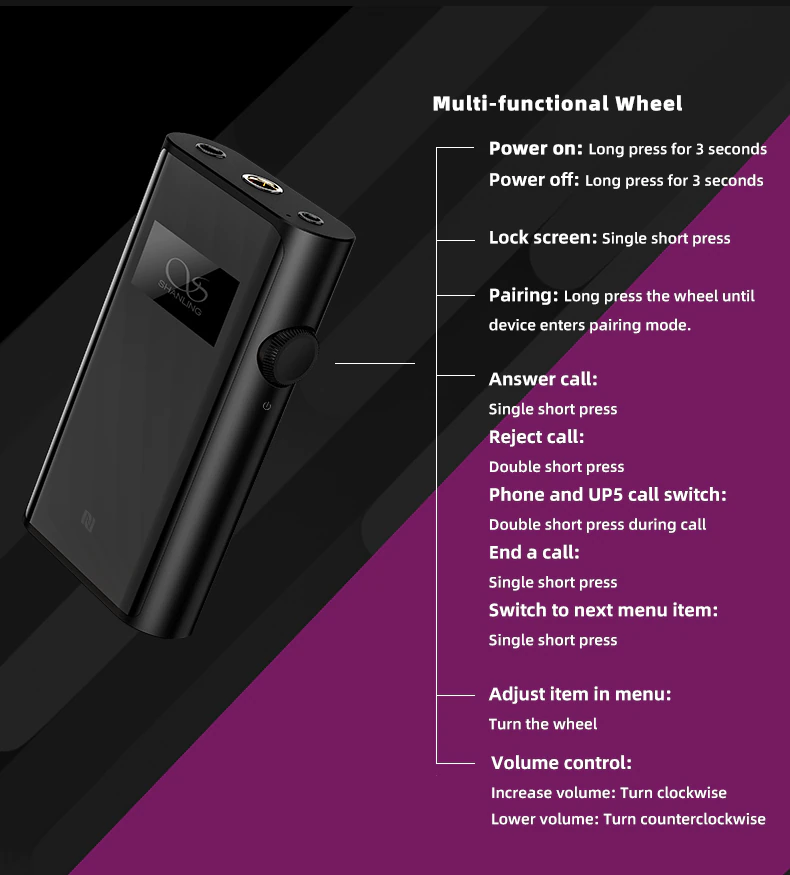
There are now 3 headphone outputs on the top of the unit: 3.5mm single-ended, 2.5mm balanced and 4.4mm balanced. In addition, the built-in Knowles SiSonic microphone sits just below the 2.5mm output. Gone is the old Mode button and in its place is the new multi-function Playback button on the left side. The Playback button controls music playback and opens the system menu.

On the bottom side of the UP5 is the USB Type-C port for charging and DAC functionality. The device is slightly larger and heavier than the UP4. Its dimensions are 68mm*39mm*14.5mm and the weight is 50 g.
One of the biggest changes the UP5 brings to the series is its OLED display. The display allows you to easily navigate through the menu and options and also gives you valuable information such as current volume, battery level and which Bluetooth codec is in use.
Internals and Battery Life
Internally, the Shanling UP5 sports dual ESS Sabre ES9219C DAC chips. The device can operate on a single DAC or both at the same time. In terms of sample rates, the UP5 handles up to DSD256 and 32-bit/384kHz, courtesy of the new Xmos XU208 USB input. Oh, and MQA (up to 8x) support is here too.
Bluetooth 5.0 is handled by the Qualcomm QCC5120. As usual, there are lots of tasty Bluetooth codecs supported, including LDAC, LHDC, aptX HD, aptX LL, aptX, AAC and SBC.
Output power is 112mW @32 Ω from the single-ended output in dual DAC mode and 240mW @32 Ω from both 2.5mm and 4.4mm balanced outputs. That’s a significant amount of power and will comfortably drive most IEMs and reasonably efficient full-size headphones.
Battery life is an impressive 15 hours using the single-ended output or 11 hours using the balanced out, thanks to the internal 680 mAh battery. It takes about 2 hours to fully charge the device.
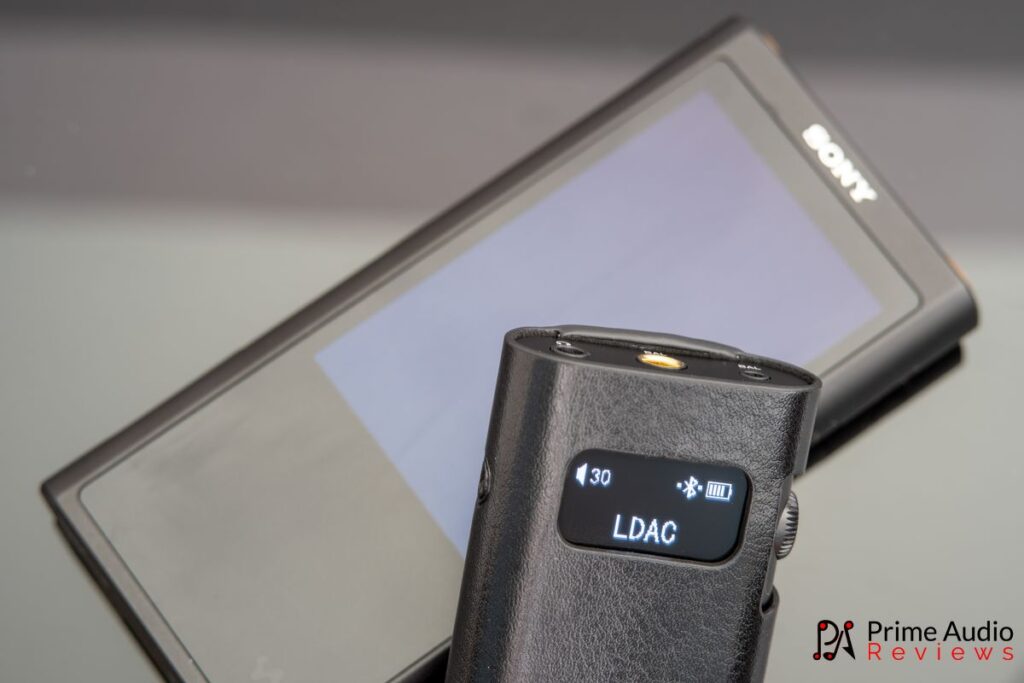
Shanling Companion app
The companion app gives you easy access to all of the UP5 settings. You can also do updates easily via the app and stay up to date with the latest firmware version. This is where you can make your own custom EQ settings, change the screen brightness and screen off timer as well.
Use the UP5 as an external sound card
You can use the UP5 to increase the performance of your computer or tablet audio too. All you need to do is connect it using the included USB cable and you’re good to go. There’s no need to install additional drivers or mess with settings, it just works. With its new Xmos XU208 chip the UP5 works as a high-quality asynchronous DAC. Sure enough, when I checked the device properties on my computer, I was able to choose any sample rate and bit depth all the way up to 32-bit/384000 Hz.
Mic and call quality
UP5 has a built-in Knowles SiSonic microphone so you can use it to make voice calls and use your phone’s smart assistant. Furthermore, if your earbuds or earphones have an in-line that will work with the UP5 as well. The call quality of the built-in mic is excellent. For some reason, it was very quiet when I was recording on my phone but that was probably user error. Anyway, you can get an idea of the mic quality from the file below.
Sound
Gear used for testing includes:
- Sources: iPhone, Shanling M5s, Windows 10 PC
- IEMs: ItsFit Fusion, CCA NRA, Shanling ME500 PE
- Headphones: Hifiman Sundara, Beyerdynamic DT990 Pro
*All testing was done in Dual DAC mode and Linear filter setting using both single-ended and balanced outputs.
What I hear from the UP5 is a more transparent and uncoloured sound compared to the UP4. This is noticeable mostly in the treble, which has better extension and detail retrieval. Where the UP4 added a touch of warmth to the sound, the UP5 is more neutral.
That’s not to say flat though: the UP5 still has that magic Shanling house sound quality i.e. excellent resolution and clarity with good end to end extension. Treble notes have better definition and less roll-off than the UP4. Firing up Porcupine Tree’s “Men of Wood – Remastered” with its persistent hi-hats, the UP5 doesn’t have the slightly softened effect that I hear on the UP4. The sheen of the hats has a more natural and extended decay.
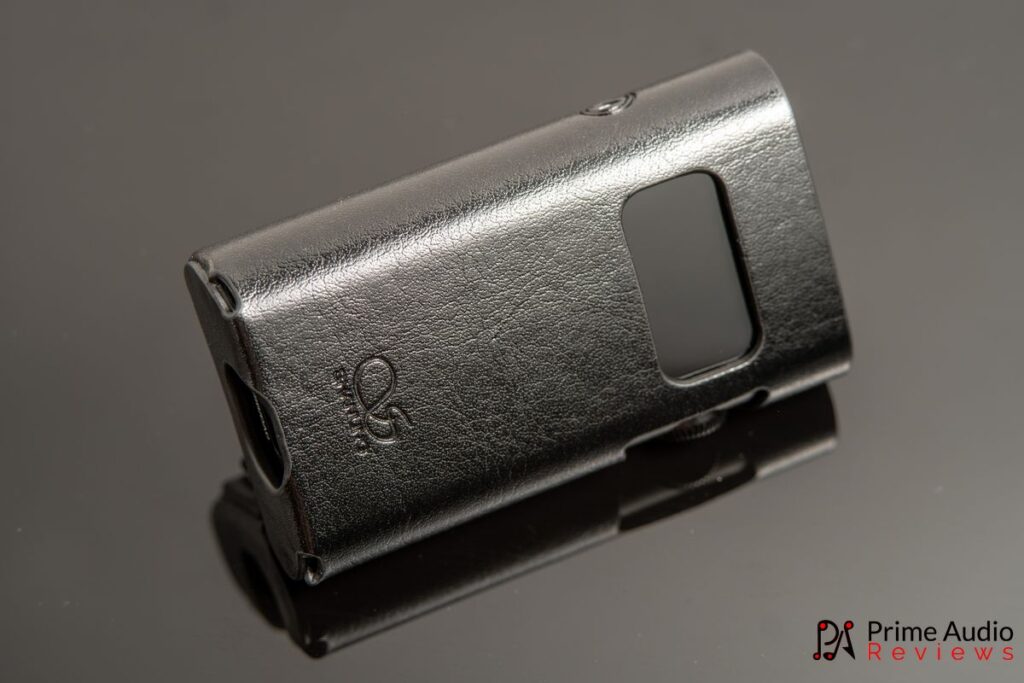
Although the UP5’s bass response is linear, it has great extension too, as can be heard in Hans Zimmer’s “Gotham’s Reckoning“. Choose some IEMs with good bass response, such as the oBravo Venus or Shanling’s ME500 Platinum and strap in for the ride. The bass is fast and tight yet authoritative and powerful.
Speaking of power, the UP5 has it in spades. It will drive anything but the most demanding headphones. Using high gain it had no trouble pushing my DT990 Pro to deafening levels. The Hifiman Sundara was no obstacle for the UP5 either and the pair sounded great together. Listening to Baden Powell’s “Reza” with this combo was exquisite.
The sound quality of the wireless audio is excellent, especially if using LDAC or aptX HD. Having said that, even AAC when using my iPhone sounds good. Bluetooth audio has really come a long way and if you haven’t tried it recently, I’m sure you’ll be surprised.

Conclusion
The Shanling UP5 takes everything I loved about the UP4 and improves on it. From the added versatility of its extra balanced output to the OLED display and additional output power, my favourite Bluetooth amplifier just got even better. Add to that the solid battery life, build quality and great sound and the UP5 is definitely worthy of our recommended award.

Specifications
| Bluetooth codecs | LDAC, LHDC, aptX HD, aptX Low Latency, AAC, SBC |
| Bluetooth chip | Qualcomm QCC5120 |
| DAC chip | ESS Sabre ES9219C X 2 |
| USB Input chip | Xmos XU208 |
| Bluetooth version | Bluetooth 5.0 |
| Transmission distance | Up to 10 meters |
| Microphone | Knowles SiSonic microphone |
| Output Power | 90mW @32 Ω (3.5mm, single DAC mode) 112mW @32 Ω (3.5mm, dual DAC mode) 240mW @32 Ω (2.5mm & 4.4mm balanced) |
| Signal-to-noise ratio | 120dB (Single-ended) 120dB (Balanced) |
| Channel separation | 70dB @32 Ω (Single-ended) 108dB @32 Ω (Balanced) |
| THD+N | 0.0018% (LDAC/ A-W/0.5V / 32Ω) 0.0035% (others, A-W / 0.5V / 32Ω) |
| Battery Life | 15 hours (Single-ended) 11 hours (Balanced) |
| Charging time | 2 hours |
| Battery capacity | 680 mAh |
| Recommended charger | DC 5V / 1A |
| USB Input | Type-C interface, supporting both UAC 1.0 and UAC 2.0 |
| Accessories | High-quality leather case, USB C-to C cable, manual |
| Volume adjustment | Use the scroll wheel to adjust the volume separately from the phone |
| Outputs | 3.5mm\2.5mm\4.4mm, support car AUX |
| Size | 68mm*39mm*14.5mm |
| Weight | 50 g |



